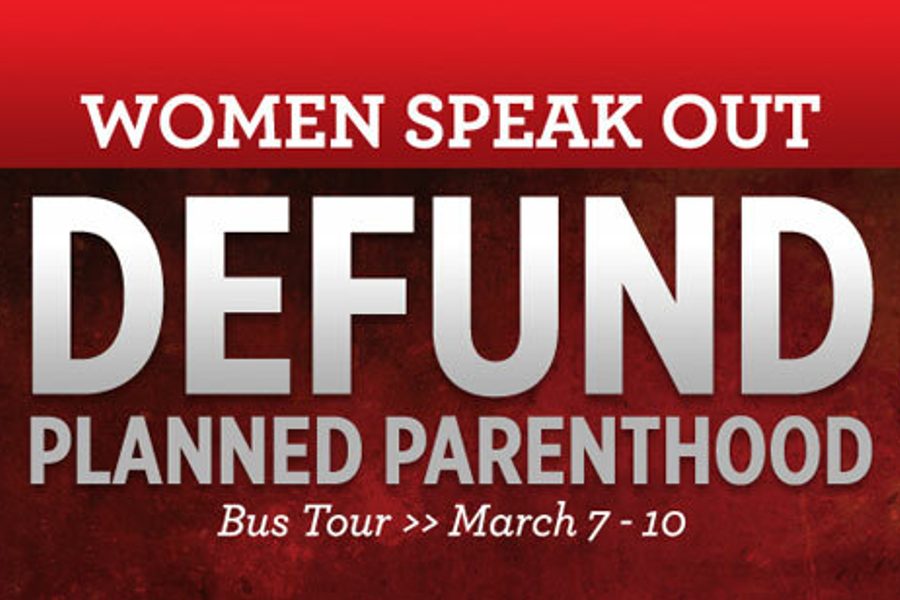The Susan B. Anthony List’s Situational Feminism
The organization’s model legislation makes clear it is more interested in ending abortion than helping women.
Jude Ellison Sady Doyle

To say that the SBA List is interested in defunding Planned Parenthood is an understatement. The anti-abortion political advocacy group has made defunding Planned Parenthood a sport. Literally: On its website, you can find the scoreboard. It’s right under the banner that reads “DEFUNDING PLANNED PARENTHOOD”, in all caps.
So the attitude of the SBA List, in regard to Planned Parenthood, and the funding thereof, seems clear. And it is, not surprisingly, furthered by the piece of model legislation, crafted as part of a plan to work with state legislators by promising “grassroots effort” and potential campaign funding, which I recently reviewed: the “Whole Woman’s Health Priorities Funding Act,” the expressed “priorities” of which are to (surprise) defund organizations that provide abortion, such as Planned Parenthood. Or, as the model bill puts it, to direct state funds toward “primary and preventive care” for “maternal and fetal patients” from primary care providers, and to cut it from “providers of health care services that are specialized to particular medical services or discrete patient populations,” which is a very polite way to say “abortions” and “women.”
All of which is puzzling, given that the SBA List promotes itself as a feminist organization.
The fact is that the SBA List’s “feminism” is, at best, situational, and at most, founded on a deeply casual relationship to truth. It claims to exist to elect pro-life women to Congress; but it supports male pro-life candidates (through its connected political action committee, the Susan B. Anthony List Candidate Fund). It claims that SBA List is a model for anti-abortion feminists; but Susan B. Anthony did not organize against abortion. And the “Whole Woman’s Health Priorities Funding Act,” for example, bills itself as aiming to improve prenatal care, when that is the opposite of what its impact will be.
Make no mistake: The proposed legislation does spend an exceptionally long time talking about the importance of prenatal care before making its point. By the time you get to the portion of the bill in which the state is not allowed to contribute to the rent payments of abortion providers, you’ve swallowed so many lines about folic acid supplements and diabetes screenings that you’re somehow surprised. And yet, this bill has one distinct goal; it’s the goal that is spelled out in big capital letters, once you look away from the bill and turn to the organization’s actual website.
“I think that what people say and what people do is very different,” says Jodi Jacobson, of RH Reality Check. “I look at what people do. They claim to be very woman-friendly, but only if you agree with their specific idea of what women should be doing.”
Jacobson describes the SBA List’s selective feminism as an extension of the Right Wing’s efforts to package anti-choice policies in a way that will sell. “Adequate prenatal care,” for example, is not a divisive issue. And so, in promoting a bill that is primarily about cutting all state funding from an organization like Planned Parenthood, which provides pre-natal care and assistance for low-income women, it’s useful to claim that it is a bill that provides more state funding for better prenatal care. Which has seemingly never been a priority of the SBA List, outside of the issue of abortion.
“They really have bought into the [GOP presidential candidate Rick] Santorum approach to all of this,” Frances Kissling, former president of Catholics for a Free Choice and now a visiting scholar at the University of Pennsylvania. “Anti-abortion, anti-contraception, anti-gay rights.”
In many ways, the fight against Planned Parenthood, and public funding for reproductive healthcare generally is not even about abortion at all. It’s about the relatively virulent strain of anti-choice ideology that in 2011 became more mainstream than ever: The fight against access to contraception.
This is not an overt goal of the SBA List’s proposed act – it allows, graciously enough, that “abortion” and “contraception” are not the same thing, and that the latter may still be funded – but its aim is still to remove one reliable source of birth control from the field. Despite its language, this plan is not distinct in its impact from any other bill that aims to restrict the rights of citizens to choose their own plans for avoiding, terminating or coping with pregnancy.
One sure way to understand the SBA List, Kissling notes, is to note what it seems to claim as a triumph: Its push to defeat anti-choice Democrats, and replace them with more extremely anti-choice Republicans, during the 2010 elections.
But the SBA List may not be as powerful as it thinks, despite its prominence and its fervent push to eliminate all but the most extremist candidates from political races. It sweet-talks state legislators with tales of its capacity to win and fund elections, but, in truth, the elections it has helped win may not have been for the reasons it claims.
Those Democrats, Kissling says, “didn’t lose their seats because of the Susan B. Anthony fund, and they didn’t lose their seats because they were pro-life. They lost their seats because they were Democrats in an election year… it was a rejection of the Democrats on the economy far more than it was on abortion issues.”
There’s what you say, and there’s what you do. And then, there’s what you say you do, which usually sounds much, much better than reality. When it comes to the SBA fund, and its distinctively selective approach to truth – Susan B. Anthony (1820−1906), who never organized against safe and legal abortion because it did not exist in her era, was anti-abortion; the organization supports male candidates against female ones but is supposedly dedicated to electing more female candidates; its model bill that would restrict healthcare access for pregnant women supposedly expands healthcare access for pregnant women – the gap between rhetoric and reality is very hard to ignore.

I hope you found this article important. Before you leave, I want to ask you to consider supporting our work with a donation. In These Times needs readers like you to help sustain our mission. We don’t depend on—or want—corporate advertising or deep-pocketed billionaires to fund our journalism. We’re supported by you, the reader, so we can focus on covering the issues that matter most to the progressive movement without fear or compromise.
Our work isn’t hidden behind a paywall because of people like you who support our journalism. We want to keep it that way. If you value the work we do and the movements we cover, please consider donating to In These Times.
Jude Ellison Sady Doyle is an In These Times contributing writer. They are the author of Trainwreck: The Women We Love to Hate, Mock, and Fear… and Why (Melville House, 2016) and was the founder of the blog Tiger Beatdown. You can follow them on Twitter at @sadydoyle.







